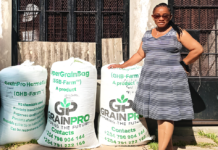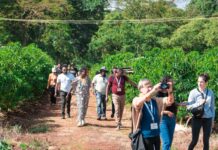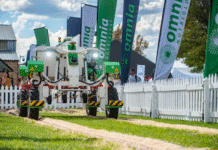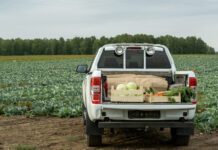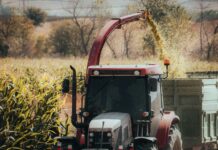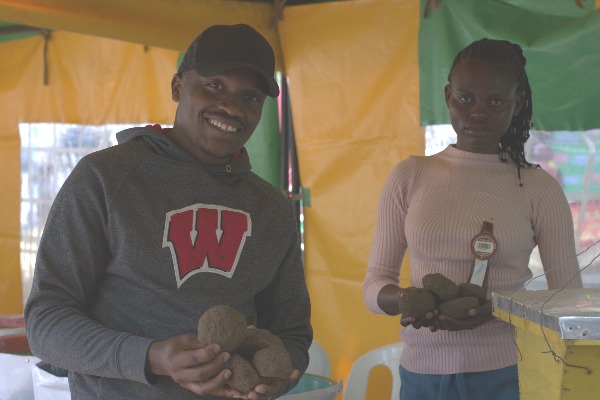
For many years, farm wastes such as dried leaves, stems, sawdust, paddy husk, groundnut hull, and coir pith have been difficult to manage and are often burned to reduce accumulation, a practice that causes serious environmental, health, and economic repercussions.
The challenge, driven by inadequate infrastructure, limited awareness, and poor access to affordable waste management solutions—especially for smallholder farmers—has led to harmful emissions, resource depletion, and missed opportunities to recycle these materials into useful products.
Innovative solutions such as producing cow dung briquettes—a renewable energy source made by combining cow waste with other biomass materials—are transforming farm waste management into an environmentally friendly and economically viable option for rural households and small businesses.
The role of cow dung in briquette production
Alex Muya and Dorothy Weitaba, third-year students from Nairobi’s Kabete National Polytechnic, are at the forefront of promoting the use of cow dung as a raw material for creating fuel briquettes. Their research highlights the many benefits of using cow dung as both a biomass and a binder.
“Because the raw materials used in the process may be renewed naturally, the briquettes produced can serve as a renewable energy source. Additionally, they can contribute to energy source diversification, which is a critical step in reducing reliance on fossil fuels,” said Alex.
Cow dung, being a high-quality biomass with binding properties, serves as an excellent base material when mixed with other waste products like wood dust, rice husks, charcoal dust, and maize cobs.
This process not only helps manage farm waste but also reduces environmental pollution by providing an alternative to the burning of crop residues, which often leads to the emission of greenhouse gases.
The production process
The production of cow dung briquettes is a simple yet effective process that begins with collecting fresh cow dung and soaking it overnight to eliminate unpleasant odours before draining and washing it thoroughly to remove residual urine and ammonia.
At about 50% moisture content, the cow dung is mixed with dry materials such as rice husks, wood dust, or charcoal dust in a 1:1 ratio, then kneaded, shaped into fist-sized balls, and left to sun-dry on a porous surface for up to a week to remove excess moisture.
The porous surface allows water to escape easily and prevents mold formation, resulting in fully dried briquettes that burn cleanly without smoke—an indicator of quality and readiness for use or sale.
“A fully dried cow dung briquette will not produce smoke when burnt, which is a sign of its readiness,” said Alex.
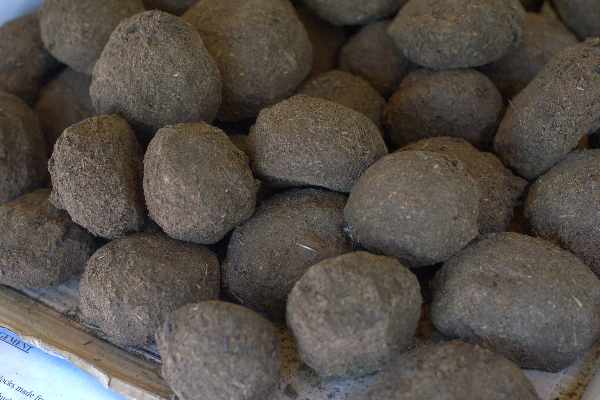
The benefits of cow dung briquettes
Cow dung briquettes offer multiple benefits, making them an ideal alternative to traditional cooking fuels like firewood and charcoal. Some of the advantages include:
- Renewable energy source: Since cow dung and other agricultural waste materials are renewable, briquettes made from these materials contribute to energy source diversification. This helps reduce the over-reliance on fossil fuels and unsustainable wood harvesting, a practice that contributes to deforestation.
- Cost-effective: For rural households, especially in Kenya, using cow dung briquettes can be a cost-effective alternative to expensive charcoal or firewood. The raw materials—cow dung and other biomass—are freely available on farms, making it an affordable option for farmers looking to minimize fuel costs.
- Reduced environmental impact: By utilizing waste materials to create briquettes, farmers can reduce air pollution from open burning of agricultural residues, which is a common practice. The process helps reduce carbon emissions and curtail environmental degradation.
- Longer burning period: Cow dung briquettes have a longer burning period compared to firewood or traditional charcoal.
According to Dorothy, a full jiko (traditional stove) can burn for up to three hours on a single batch of briquettes, providing extended cooking times, which is particularly useful in rural households where fuel efficiency is crucial.
- Economic opportunity: The production and sale of cow dung briquettes provide smallholder farmers with an economic opportunity.
“The briquettes are quite affordable and also a good business venture,” said Dorothy. “We sell one kilogram for about Ksh100, and since most of the raw materials are readily available on farms, it creates a new source of income for farmers while supporting local economies.”
- Improved cooking environment: Briquettes produce less smoke compared to traditional fuels, which can significantly improve indoor air quality. This reduction in smoke can help prevent respiratory diseases, which are a major health concern in many rural areas where traditional cooking methods often involve open fires.
The future of cow dung briquettes in Kenya
With growing demand for cleaner cooking solutions, cow dung briquettes offer an affordable, eco-friendly, and renewable alternative for rural households across Africa, helping reduce energy poverty and environmental harm.
For innovators like Alex and Dorothy, the project advances waste management while contributing to the fight against climate change through renewable energy use.


